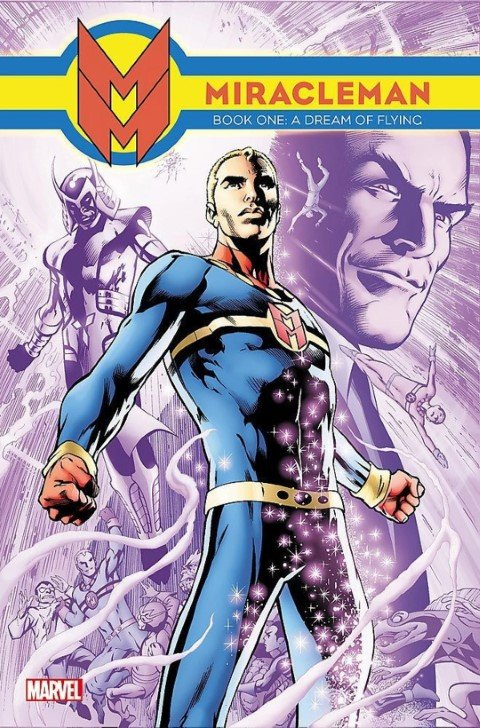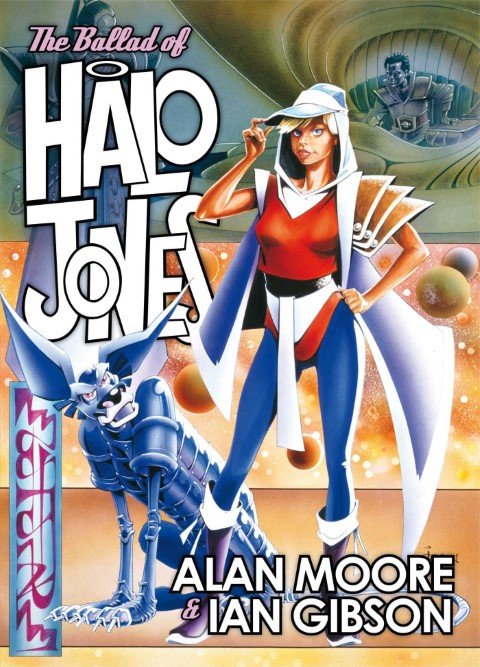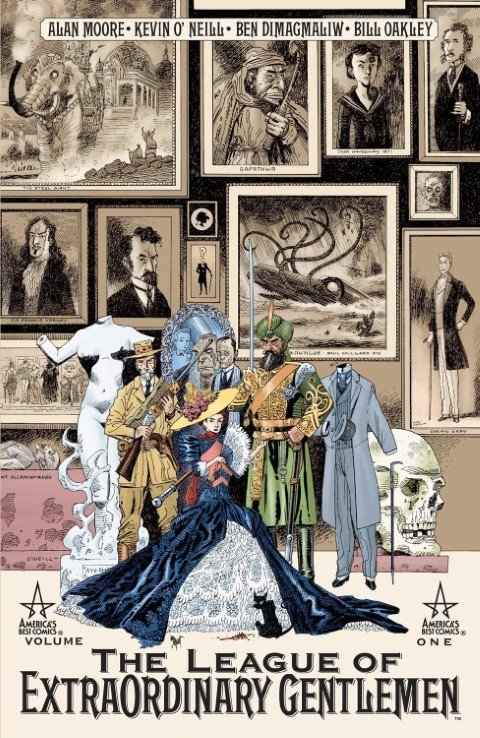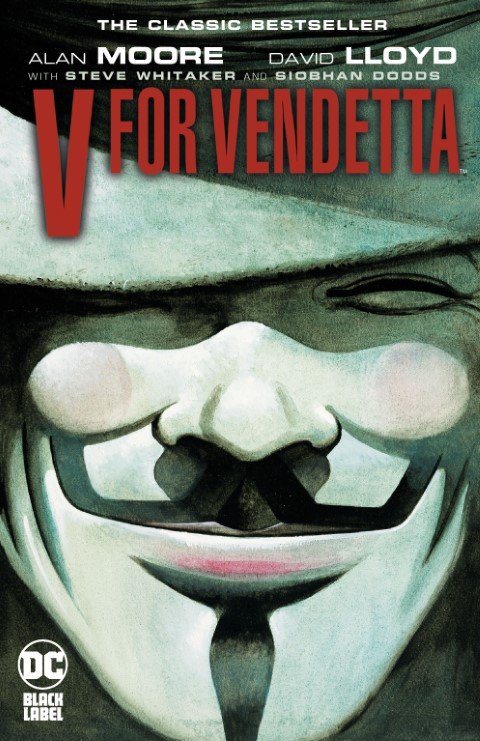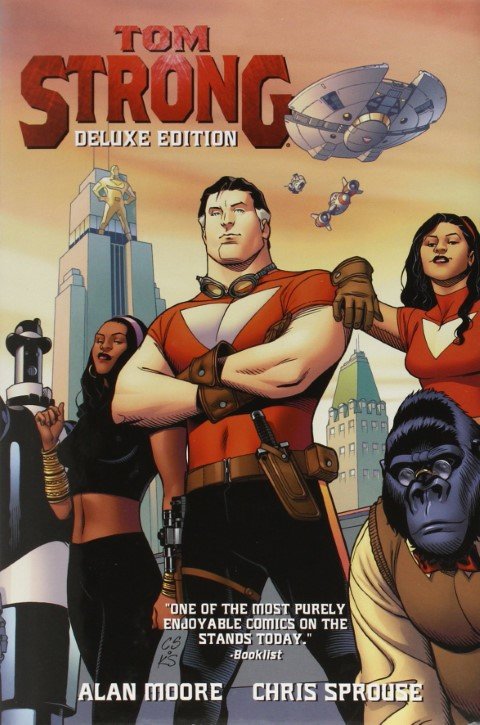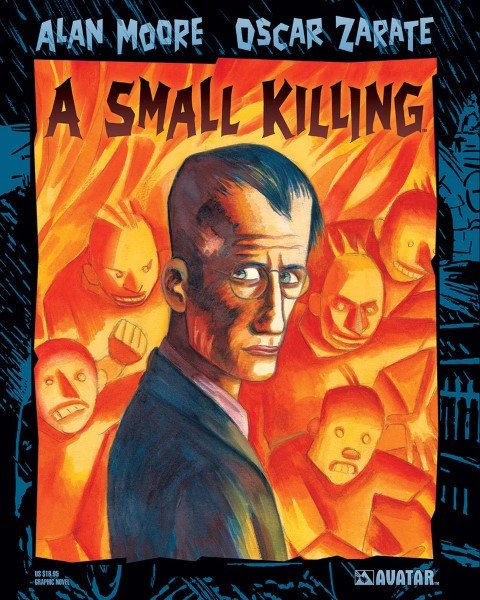
Alan Moore is the most influential comics writer of the 1980s-1990s. It’s a fact. His work helped to define a new creative era of the medium at a time when it needed a way to grow, to mature. Nobody can deny how important some of his books were and still are for the comic book industry and for a lot of readers. His way to push the boundaries of what superhero comics can be never stopped to amaze and his success is undeniably justified.
Although he became a controversial figure and sometimes a tragic one too, you can not look at his career with anything but respect. In fact, reading Alan Moore’s work is required to fully understand the History of comic books – it helps that he collaborated with some of the greatest artists of his time like Dave Gibbons, Eddie Campbell, Ian Gibson, Stephen R. Bissette, Rick Veitch, John Totleben, Kevin O’Neill and more.
Of course, everybody has something to say about Alan Moore and his work. Us too! That’s why we are here today, to talk about his best comics, in my opinion. Some books are hard to find, a lot of his independent comics are in fact out-of-print, so it’s not easy to read everything he wrote. That said, there’s still enough available out there to enjoy and this is my selection of 10 of the best Alan Moore comics to read. You can write your own suggestions in the comments section.
Where to Start with Alan Moore? A Recommending Reading List of the Best Stories Written by Alan Moore
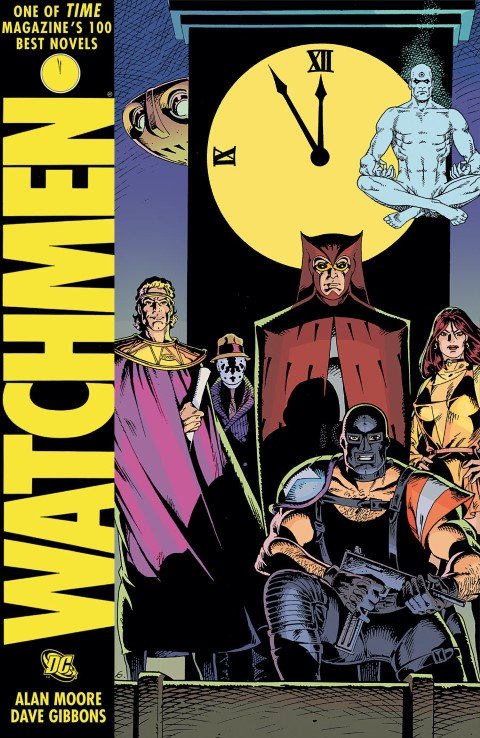
1. Watchmen
When the Comedian, a vigilante in the service of the government, is killed, his former ally, Rorschach, leads the investigation. He quickly reconnects with other retired heroes including Dr. Manhattan, a superman who changed the course of history. While a nuclear war is brewing between the USA and the USSR, everyone is wondering: Who Watches the Watchmen?
Let’s start with the most logical choice: Watchmen. I don’t even know what to add. I personally think that it’s probably not the best entry point for a reader to discover comic books, but it’s not a bad one for those who want to familiarize themselves with Alan Moore’s works—and Dave Gibbons’ marvelous art. Originally, Watchmen was supposed to be an update of some of Charlton Comics characters. DC Comics bought the company and needed to do something with the IPs. Moore’s proposal would have destroyed the commercial potential of too much material, and it was decided to leave Charlton’s characters out of the story.
Watchmen ended up being an alternate history of America (from British artists) in which masked vigilantes played a big part. Alan Moore explored and satirized the concept of superheroes while doing the same with the political and socio-economic climate of the time. It was an innovative mash-up for mainstream comics during the second half of the ’80s, and it became highly influential. It still is.
If you want more information about the universe of Watchmen, go to the dedicated page.
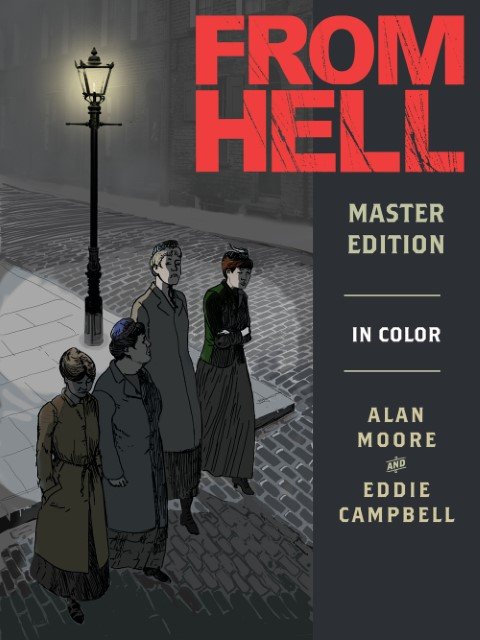
2. From Hell
From the squalid alleys of the East End to the Houses of Parliament, from church naves to dens of the occult, all of London feels the uniquely irresistible blend of fascination, revulsion, and panic that the Ripper offers. The city teeters on the brink of the twentieth century, and only the slightest prodding is necessary to plunge it into a modern age of terror.
There’s no definitive proof about the identity of the infamous Jack the Ripper, but there are a lot of theories. From Hell is Alan Moore’s proposition. With fellow British artist Eddie Campbell, Moore mixed true events with theories. Reality and fiction met in a fascinating way to offer an exploration of power, inequality, history, and beliefs during the Victorian age. It’s the end of an era, one which was chaotic.
Alan Moore did a lot of research and, with the help of Campbell’s rough black and white style, put London under the microscope. The city is as much a part of his fascinating narrative as the killer’s motivations. It’s violent, sometimes a bit esoteric, often captivating and unnerving—yes, it’s a book for a mature audience—but it’s also a touching story.
3. Miracle Man
KIMOTA! With one magic word, a long-forgotten legend lives again! Freelance reporter Michael Moran always knew he was meant for something more-now, an unexpected series of events leads him to reclaim his destiny as Miracleman!
Before Watchmen, Alan Moore already wrote a highly influential deconstruction of the superhero genre. In fact, it was a real superhero story that take things to a really dark place by asking: what would people with godlike power really do? Well, they act like gods.
It doesn’t start that way. Miracleman (or Marvelman, but it’s complicated) was originally a pastiche of Captain Marvel/Shazam that Moore wrote with realism. It’s about freelance reporter Michael Moran who reclaims his destiny as Miracleman, but soon discovers that the great responsibilities coming with his powers are even bigger than he thought. Alan Moore really went full sci-fi with Miracleman and introduced aliens and great scale fights. In fact, the violence and the power on display here are what made the series stand out. It was an eye-opening view on the superhero archetypes, and it went all the way to a satisfying end that changed the way a lot of people thought about the genre.
4. The Ballad of Halo Jones
Bored and frustrated with her life in 50th-century leisure-ghetto housing estate ‘The Hoop’, 18-year-old everywoman Halo Jones yearns for the infinite sights and sounds of the universe. Pledging to escape on a fantastic voyage, she sets in motion events unimaginable; a spell on a luxury space-liner, a brush with an interstellar war – Halo Jones faces hardship and adventure in the name of freedom in the limitless cosmos.
One thing was missing in the pages of the weekly British comic 2000 AD at the beginning of the ’80s: a great female protagonist. Then, Alan Moore introduced Halo Jones. She was not a powerful being, but a sympathetic 50th-century everywoman without a lot of options in life who tried to find her place in a galaxy full of dangers.
The beautiful art of Ian Gibson immersed The Ballad of Halo Jones in a fascinating future during three books. The first one introduced us to the 18-year-old Halo Jones as she navigates the housing estate where she lives—and her misadventures on a shopping trip that led her to lose what was dear to her. In the second book, Halo works as a stewardess on a year-long space voyage that was not as uneventful as expected. In the third one, ten years later, she became a soldier. And the story stops here. It was supposed to continue, but a conflict about the author’s rights ended this fascinating and highly entertaining sci-fi feminist adventure.
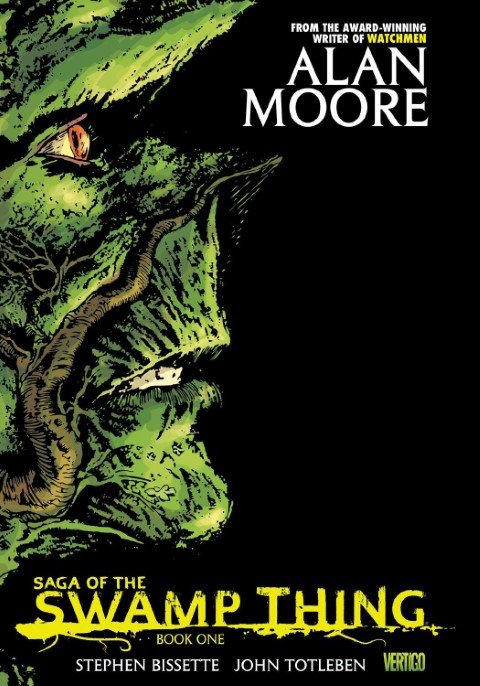
5. The Saga of Swamp Thing
Scientist Jason Woodrue has just discovered a creature in the heart of a Louisiana swamp. The plant monster arouses his curiosity as a researcher as well as that of his boss, who decides to appropriate it. But the humanoid creature is inhabited by the memory of a man, and does not intend to let it go …
A cancellation was on the horizon for Swamp Thing when Alan Moore was recruited to revamp the series. And that’s what he did. He introduced a new origin story to make the swamp creature a true monster, and he started to mix horror and fantasy with environmental and social issues to develop a truly unique title.
With Stephen R. Bissette, Rick Veitch, and John Totleben who took care of the visual part, Moore injected a new life in a dormant part of the DC Universe, introduced fascinating mythological elements, and new characters (like the famous John Constantine). The Saga of Swamp Thing became highly influential for good reasons. Even by today’s standards, the series feels innovative and a bit risky. It also became the critical and commercial success that opened the way for a lot of British writers, and the template for the kind of books that will be representative of the Vertigo line.
If you want more information about the universe of Swamp Thing, go to the dedicated page.
6. The League of Extraordinary Gentlemen
The year is 1898, and Mina Murray is recruited by Campion Bond on behalf of British Intelligence and asked to assemble a league of other extraordinary individuals to protect the interests of the Empire: Captain Nemo, Allan Quatermain, Dr. Jekyll, and Hawley Griffin the Invisible Man. They help stop a gang war between Fu Manchu and Professor Moriarty, nemesis of Sherlock Holmes.
What started as “Justice League of Victorian England” quickly became something different and more in the vein of what we now call an Alan Moore comics—here with art by Kevin O’Neill. Highly imaginative, violent, and sometimes disturbing, undeniably thought-provoking and build with a dense, almost opaque, mythology at its heart. Moore loves exploring how myths can find a place in different universes. In The League of Extraordinary Gentlemen, figures from classic literature collide in a surprising manner to explore the Victorian era and its fiction.
Volumes I & II are a must-read, what came after is not as interesting, but Moore certainly knows how to make a story go forward. Go to the dedicated page for more information.
7. V For Vendetta
In a world without political freedom or personal freedom, and precious little faith in anything, comes a mysterious man in a white porcelain mask who fights political oppressors through terrorism and seemingly absurd acts. It’s a gripping tale of the blurred lines between ideological good and evil.
Like with Watchmen, Alan Moore showed with V For Vendetta (with art by David Lloyd and Tony Weare) his more political side, and a pessimist view of the future. It takes us in a dystopian and post-apocalyptic near-future history version of the United Kingdom in the 1990s, preceded by a nuclear war in the 1980s that devastated most of the rest of the world. Clearly influenced by Orwell’s 1984, Moore opposed anarchism and fascism in a way that condemned any form of extremism, especially when it’s about doing what’s right.
Moore didn’t tell us what to think, but when you see the movie, you realized how his work can really be misunderstood. In my opinion, it gave to V For Vendetta even more sense.
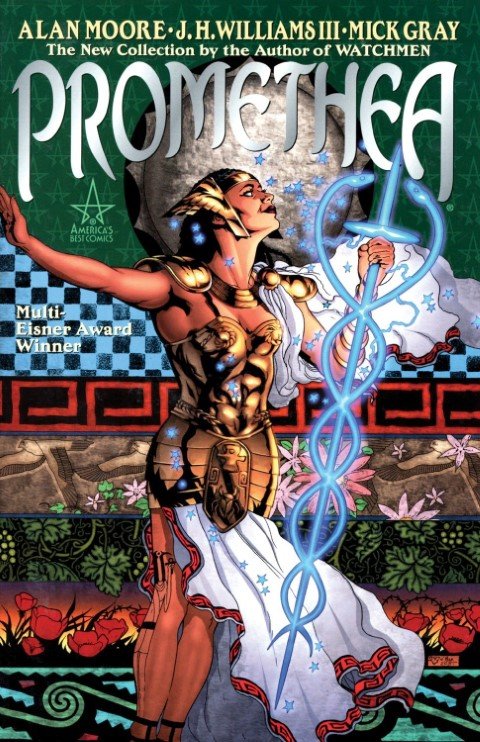
8. Promethea
Sophie Bangs was just an ordinary college student in a weirdly futuristic New York when a simple assignment changed her life forever. While researching Promethea, a mythical warrior woman, Sophie receives a cryptic warning to cease her investigations. Ignoring the cautionary notice, she continues her studies and is almost killed by a shadowy creature when she learns the secret of Promethea. Surviving the encounter, Sophie soon finds herself transformed into Promethea, the living embodiment of the imagination. Her trials have only begun as she must master the secrets of her predecessors before she is destroyed by Promethea’s ancient enemy.
Alan Moore’s fascination for the imagination goes even deeper in Promethea than in The League of Extraordinary Gentlemen. In this really dense, documented, and border-pushing story illustrated by J. H. Williams III, he explored how mythology, religion, and pop culture are all defined and influenced by our imagination, and how they are all connected to form a map to a greater understanding of who we are and of the world.
Well, it’s how I describe it, but I find it hard to synthesize what Promethea is about using just a few words. It’s a (heavily documented) non-conventional approach to superhero storytelling, a bold exploration of multiple myths, religions, and cultures connected with an identity quest that evolved beyond the familiar limits of stories of that kind. It clearly required more than one reading though, because there’s a lot to think about and to understand in this esoteric tale.
9. Tom Strong
Tom Strong’s remarkable exploits over a nearly century-long career feature an amazing supporting cast of characters that include his wife Dhalua (the daughter of a mighty chieftain), his daughter Tesla, the enhanced ape King Solomon and his robotic valet known as Pneuman. From his arrival in Millennium City, this handsome hero championed the ordinary people of the city, but he has not neglected the wider world, from the tower at time’s end, to the hot lava core of the Earth, to the far cold reaches of outer space, Tom Strong’s hand is felt. Joining in his explorations are family and friends sometimes even villains who could be friends if only circumstances were different. There’s no such thing as a dull day with the Strong family!
What comes to mind when you think about Alan Moore writing a superhero story? Tom Strong is the opposite of that, and it’s great nonetheless. It’s not dark, gritty, and realistic. It’s Pulp, retro and colorful. It’s a throwback, an Indiana Jones approach to Superhero in the sense that it’s a clear homage to old-school adventure comics, but with a modern edge.
With art by Chris Sprouse, each story is standalone to a limit because it adds to the history of Tom Strong. The more you read, the richer the world of the Strong family becomes. But it stays fun, full of great ideas, and optimistic. There’s still here and there some dark underlying that Moore clearly inadvertently injects in the stories (because it’s his nature), but Tom Strong is a joyful experience for the family, an imaginative adventure/sci-fi comic with a retro vibe.
For more information, go to the dedicated page.
10. A Small Killing
Adman Timothy Hole has everything going for him and has now been handed the biggest assignment of his life, marketing a major cola in Russia. But his smooth life begins to unravel as he is stalked by a demonic child that makes him question not just who he is, but how he really affects those around him. It is about the little murders that we all have to make each day just to get by. The little assassinations of tiny things. Really, how much damage can be done by a small killing?
Talking about non-conventional Alan Moore comics, A Small Killing doesn’t have the scope of what we are used to from him. With art from Oscar Zárate, this Eisner Award-winning graphic novel is an introspective work from a creative mind who fears losing himself in the glory of his own success. It’s a metaphoric quest to reconnect with what made him the artist he became in order to recover his capacity to think outside the box, not to let the conventional define his work. It’s an intimate way to talk about the fear of becoming just another sell-out.
What are your favorite stories by Alan Moore? Tell us in the comments!
